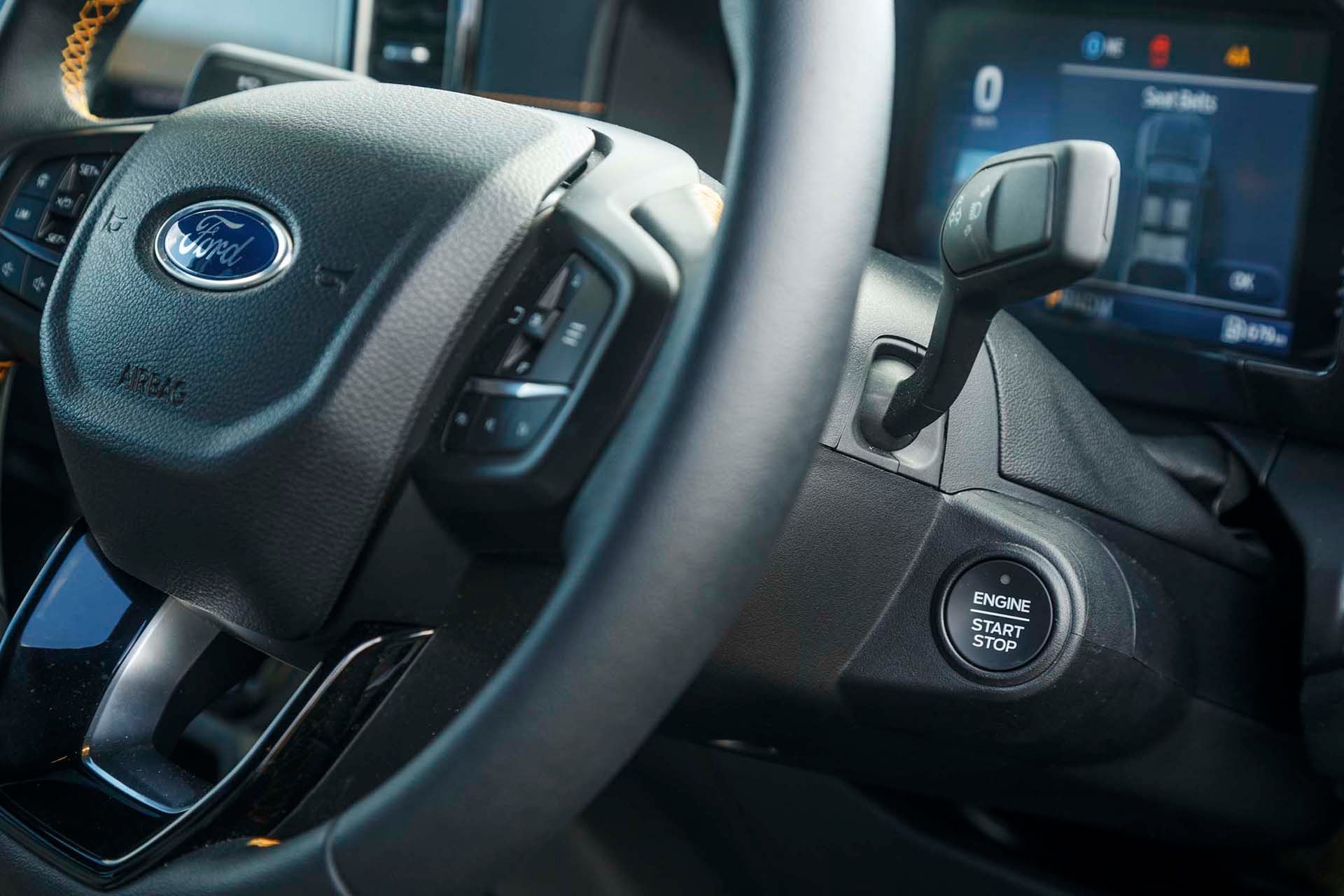2023 Ford Ranger Raptor vs Ford Ranger Wildtrak comparison review
For those shopping at the top of the Ford range, which is better, Wildtrak or the simply wild Raptor?

Ford’s Ranger, just renewed, has maintained its spot as the best seller locally, despite a general softening of ute sales. For those shopping at the top of the range, which is better, Wildtrak or the simply wild Raptor?
With the arrival of a new Ford Ranger comes the decision of just which model to buy. There are plenty of options, from the workhorse XL to the newly introduced Platinum, which offers a level of pomp not yet seen on a ute in this market.
How do the specs of the Wiltrak compare to the Raptor?
What are the differences between the Wildtrak and Raptor?
Is the Raptor better off-road than the Wildtrak?
What about on the road? Does the Wildtrak beat the Raptor?
The Raptor’s trans is smarter, there’s a Sports mode to start with, where it holds gears when required, shifts up at the appropriate time and snaps a downshift when you order one. It’s a different box to the one used in Wildtrak because the latter is not a sports truck so doesn’t have the same shifting gumption. It does the business but just in a more relaxed manner. There’s no point in messing with the manual mode to stimulate the action as this is more of a towing tool, helping lock out taller gears when you’re hauling.
Yeah, but is the Raptor all a bit too much?
The ride quality in the Wildtrak feels thoroughly resolved for a ute, until you experience the Raptor, which has a higher level of compliance again and more control too. The rear simply doesn’t move about on the bumps. And it flies over speed humps.
Inside they are similar with the same big screen infotainment system, smart key start, charge pads and the like. There is more soft padding around the cabin now, even on the door tops, and there are more drink holders.
There is a difference in the trimmings too, the Raptor with pumped up seat bolstering and sports-themed highlights. Each is practical with good storage, including a place for your fries in front of the stubby shifter (which can make selecting R a bit tricky when you’re in a hurry). Items like Isofix points in the rear, lots of air bags (including one that pops up in the centre of the cab) and a stacked active safety list make them family friendly.
So which is it then? Wildtrak or Raptor?
The Raptor is good, but is expensive with its extra initial purchase cost, the extra CO2 fees and the costs of running both in fuel use and servicing; we’d expect the intelligent oil monitoring light will pop up more regularly on the Raptor, especially if you do lots of short, round-town trips.
While astute Wildtrak buyers looking for reduced costs and emissions can opt for the bi-turbo version, for the Raptor the Ecoboost is the only option, at least for the time being. Don’t be surprised if Ford NZ quietly starts offering the detuned Euro-spec Raptor engine (212kW and 491Nm) if its average CO2 figure trends in the wrong direction in regards to the Clean Car Standard. Apparently there is a 2.0-litre diesel Raptor but it’s for Asian markets only. But presently, buyers don’t seem to care about the gas bills or the CO2 fees, with waiting lists growing by the week.
The Wildtrak V6 is more than enough truck for anyone, but the Raptor is one of those ‘just because I can’ type of vehicles. Getting the chance to really tap Raptor’s ultimate capability is the tricky part, especially at speed over rough terrain. Lucky if you have a farm or similar block of land to enable you to enjoy that $10k premium, as Ford has done a grand job on this desert racer for the showroom.
| Model | Ford Ranger Raptor |
| Price | $92,990 |
| Clean Car Discount | Fee + $5175 |
| Engine | 2956cc, V6, T, DI |
| Power/Torque | 292kW/583Nm |
| Drivetrain | 10-speed auto, on-demand AWD |
| Fuel Use | 12.8L/100km |
| C02 Output | 292g/km |
| 0-100km/h | 6.03sec |
| 80-120km/h | 3.90sec (110m) |
| 100-0km/h | 42.35m |
| Stability systems | ABS, ESP |
| Safety | AEB, ACC, BSM, LDW, RCTA, ALK, AHB |
| Tow rating | 750kg (2500kg braked) |
| Service intervals | variable |
| Warranty | 5 years/150,000km |
| ANCAP rating | not yet rated |
| Weight | 2475kg (claimed) |
| Model | Ford Ranger Wildtrak V6 |
| Price | $80,490 |
| Clean Car Discount | Fee +$3910 |
| Engine | 2993cc, V6, T, DI |
| Power/Torque | 184kW/600Nm |
| Drivetrain | 10-speed auto, on-demand AWD |
| Fuel Use | 9.3L/100km |
| C02 Output | 254g/km |
| 0-100km/h | 8.31sec |
| 80-120km/h | 6.08sec (167m) |
| 100-0km/h | 38.91m |
| Stability systems | ABS, ESP, |
| Safety | AEB, ACC, BSM, LDW, RCTA, ALK, AHB |
| Fuel Capacity | 80L |
| Tow rating | 750kg (3500kg braked) |
| Service intervals | Variable |
| Warranty | 5 years/150,000km |
| ANCAP rating | Not yet rated |
| Weight | 2399kg (claimed) |
Also consider



.jpg)








